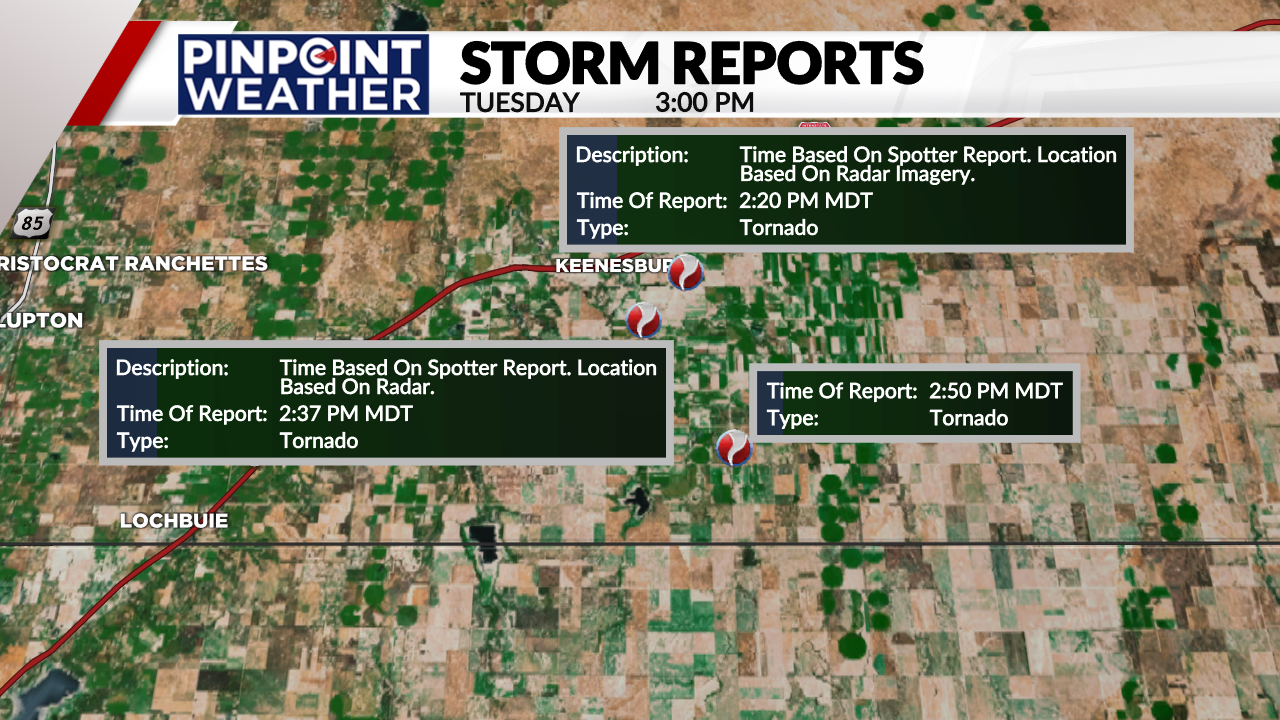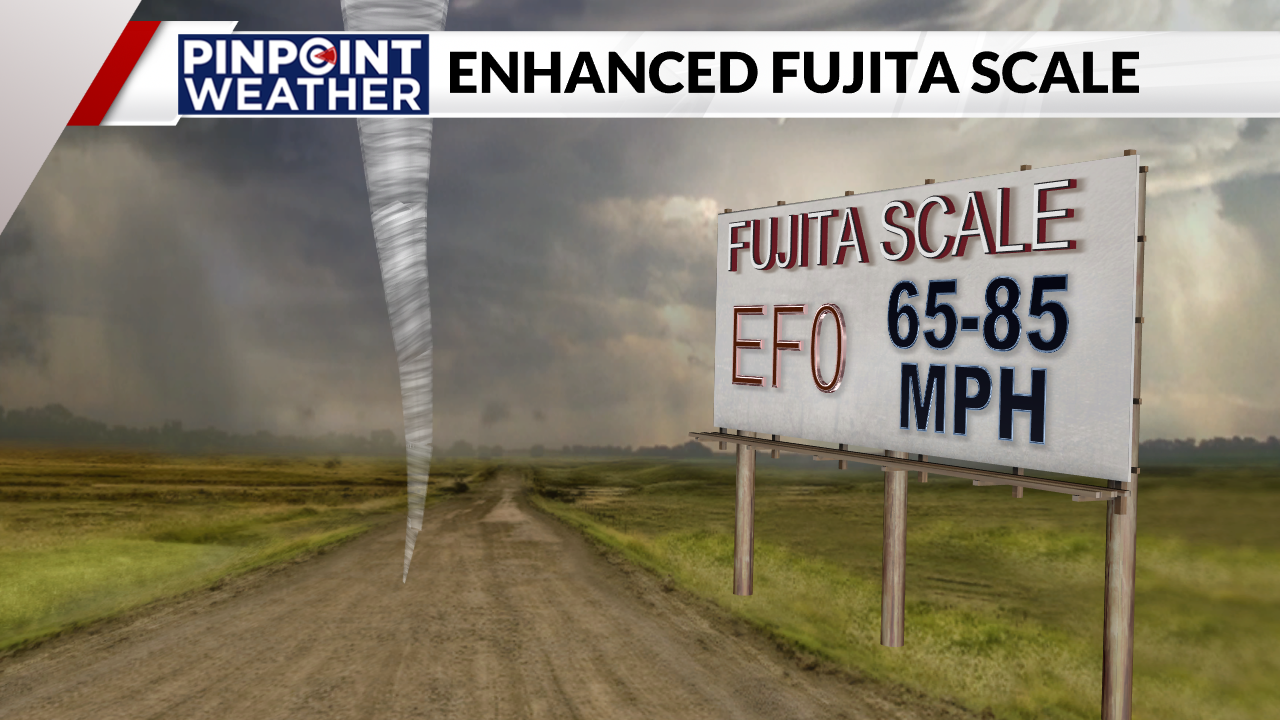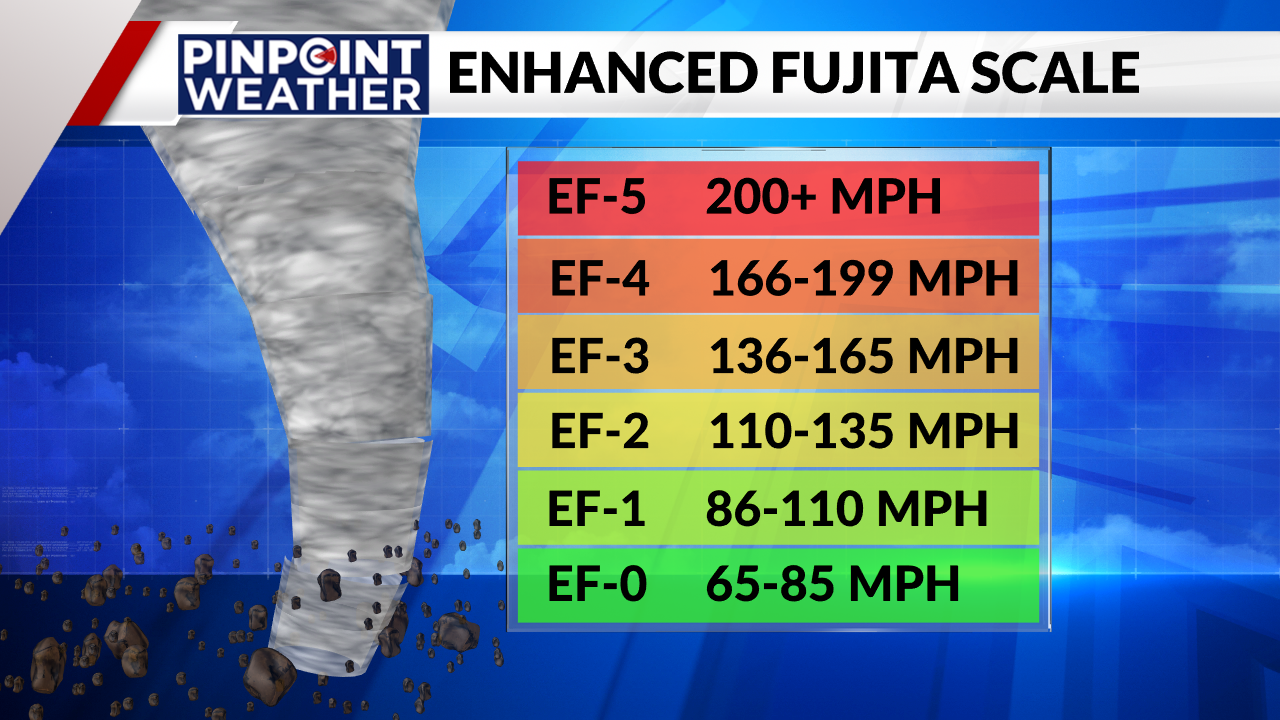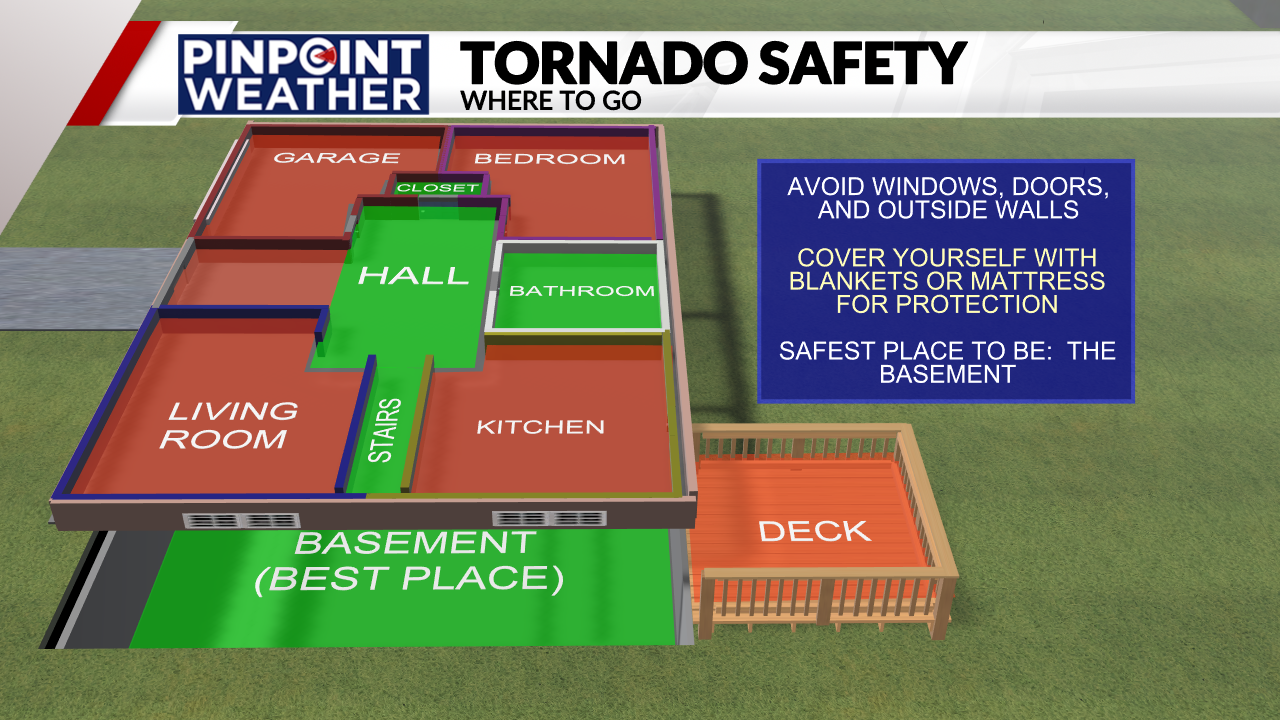DENVER (KDVR) — A strong storm system moved through Colorado on Tuesday, bringing in reports of snow, heavy rain and even the first tornadoes of 2023.

There were three different tornado touchdowns on Tuesday, which were the first tornadoes in Colorado this year. The National Weather Service has had time to look over radar data as well as pictures, videos and reports from trained spotters and has now given all three tornadoes an EF-0 rating.

Two tornado touch downs were from the same cell in Keenesburg, reported at 2:20 p.m. and 2:37 p.m. A third touch down of an EF-0 tornado was reported at 2:50 p.m. from a separate right-moving cell in Prospect Valley. Since there was no damage reported, the National Weather Service in Boulder was able to label these as EF-0 without sending out a team to survey.
The Enhanced Fujita Scale is used to give tornadoes their ranking on a scale of EF-0 to EF-5 based on the tornado’s wind speed.

EF-0 is the lowest rating for a tornado on the Enhanced Fujita Scale. However, EF-0 tornadoes can still cause damage in some areas with wind speeds that reach 65-85 mph.

While EF-0, or lower-end tornadoes, are most common in Colorado, the state has recorded up to EF-4 strength. One of Colorado’s strongest and deadliest tornadoes on record happened on August 10, 1924, when a tornado developed around 1 p.m. southwest of Thurman. As the tornado gained strength, it is estimated to have reached EF-4 strength with peak wind gusts around 166-200 mph.
It went on to become Colorado’s deadliest tornado, taking the lives of 11 people along a 10-mile path. The strongest rating that tornadoes can receive is EF-5, which means estimated wind gusts reaching 200 mph or higher.

On average, Colorado sees over 50 tornadoes a year. In 2022, Colorado reported 39 tornadoes, mostly east of CO-23. There were 48 reports across Colorado in 2021, 34 tornadoes in 2020, 53 in 2019 and 39 tornadoes in 2018.

Spring is severe weather season, so it is extra important to stay weather aware and have a plan in case a severe storm leads to a tornado warning. The safest place to be if there are severe storms in your area is underground in a basement or storm shelter. If this is not an option for you, the best thing to do is to move to the lowest level in a sturdy building and into the most interior room.
Often, this means taking shelter in a closet or bathroom so you can put as many walls as possible between yourself and any outside flying debris.
Once you are in a safe spot, stay covered until a reliable source, like a meteorologist from the Pinpoint Weather team gives you the all-clear that storms have passed your area.

